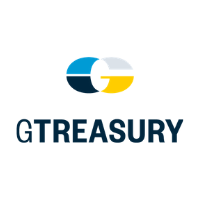5 Post-Pandemic Trends Corporate Treasurers Should Pay Attention To
26-07-2021 | treasuryXL | Gtreasury |
Corporate treasurers have manned a vital lookout position for their enterprises throughout the pandemic, navigating oft-tumultuous and unpredictable economic shifts. As businesses now inch closer to more normal operations, expect treasury to continue to fulfill a role of heightened intra-organizational visibility while adapting to new realities for what’s required from their job.
Here are the five trends treasurers can expect to play out in 2021, as a post-pandemic world appears closer across the horizon:
Treasury must continue to deliver accurate cash visibility and forecasting.
For many businesses hit hard, a waning pandemic will – hopefully – bring sales and production back to pre-pandemic levels. Organizations will continue to require frequent and accurate-as-possible cash forecasting to guide effective decision-making throughout this period of recovery. Treasury teams may continue to be called upon to deliver forecasts as often as weekly or daily; even as conditions stabilize, I think it’s unlikely that quarterly (or monthly) forecasts will be the norm. To facilitate this increased frequency, treasurers will increasingly pursue appropriate technologies fit for rapid-fire forecasting, particularly in the area of AI-based tools.
By and large, treasurers surveyed from the pandemic’s onset proved quite accurate in foreseeing a drawn-out pandemic recovery timetable – and the lingering impacts that have indeed since occurred. The data shows they’ve also proven effective in leading their companies to make strategic preparations accordingly. Those deft approaches ought to continue through the end of the pandemic while undergoing iterations to adapt to changing circumstances as necessary. In many ways, the outcome each company can expect is rooted in the capabilities and foundation for success that treasury teams have already implemented.
If treasurers aren’t yet equipped with the automation and treasury management systems necessary to match their cash reporting workloads, their organizations will be more vulnerable to shifting circumstances. Corporate treasurers in this position face compounding limitations: spending all available bandwidth on completing manual cash reporting processes leave no resources to implement new automation. To avoid or escape this cycle, treasurers should work with software and service providers to rapidly realize the automation they require.
Treasury must become more efficient.
Many treasury teams have become leaner over the course of the pandemic. At the same time, the cash forecasting and risk assessment that treasury provides has been crucial for enabling companies to maintain vital liquidity. That function will remain essential throughout the pandemic’s aftermath.
To accomplish more with less, treasury teams should pursue solutions that increase their efficiency via broader automation and smoother integrations. The pandemic has also driven the shift to distributed workplaces, which will persist going forward. Facilitating efficient distributed workforces will require treasury systems to be able to deliver continuous remote access to information, seamlessly and in real-time. Treasury teams that have digital automation projects in development ought to expedite those efforts now, and then release new features in stages where possible. The value of optimized processes and automation cannot be understated for corporate treasury in the post-pandemic environment.
As the pandemic subsides, merger and acquisition activity will rise.
Enterprises will have low-cost access to cash and equity as the pandemic wanes, which many will tap to pursue mergers and acquisitions. Treasurers will conduct the critical work of assessing the cash positions and risk profiles of potential merger partners and acquisition targets while ensuring the necessary liquidity to complete these transactions.
Treasurers must prioritize preparedness for benchmark rate reform.
LIBOR continues to be a moving target but is due to be replaced with new benchmark rates after 2021. Corporate treasurers are well-advised to prepare for this transition sooner than later, realigning all standing loans and contracts to the new rates. Those companies that aren’t yet on pace for a smooth transition will need to accelerate their work in this area.
Well before the deadline, treasurers should review all loans, credit, and investments tied to LIBOR, and arrange replacement rates and fallback provisions with lenders and servicers. Similarly, all new contracts will need to include appropriate fallback provisions. The new benchmark rates will also require treasurers to train and become experts in their new operating environment.
Singular platforms able to seamlessly integrate data and technologies across treasury ecosystems will be all the more valuable.
Treasury and risk management systems able to integrate cash, payments, risk, fraud, ERP, BI, and additional capabilities on a single platform are crucial to eliminating friction in payments and data workflows. Treasurers can discover vast benefits by using systems that unite the universe of fintech solutions they rely upon. Treasurers should vet and select solution ecosystems able to automate bank transfers, deliver simplified connectivity to banks and accounts across the globe, and transfer information along with payments. Those able to drive accurate decision-making, ease new feature implementation, improve treasurers’ user experiences, and provide strategic enhancements also deserve treasurers’ attention. The right technology strategy will open the door for treasurers to far more easily introduce valuable new capabilities and efficiencies.
Make no mistake about it: for corporate treasurers and the systems and processes they oversee, the aftermath of the pandemic necessitates maintaining vigilance and continuing to optimize practices.
ABOUT THE AUTHOR












